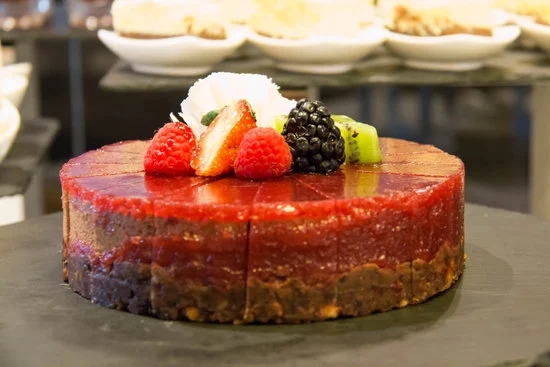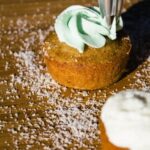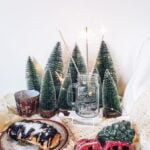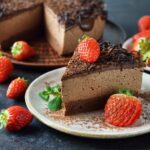Cake decorating is an essential aspect of the baking industry, transforming simple cakes into works of art. From birthdays to weddings, cake decoration plays a crucial role in making special occasions memorable. But what is used for cake decorating? Various tools and equipment are employed to create stunning designs and intricate details on cakes, elevating them from ordinary desserts to extraordinary confections.
In the realm of cake decorating, bakers utilize a wide array of tools and equipment to bring their creative visions to life. From piping bags and tips for intricate designs to fondant smoothers and sculpting tools for shaping decorations, each tool serves a specific purpose in achieving the desired look for a cake. Additionally, specialized equipment such as turntables and airbrush kits help bakers streamline the decorating process and achieve professional results.
Moreover, ingredients play a crucial role in cake decorating beyond the basic components of flour, sugar, eggs, and butter. Fondant, gum paste, food coloring, edible glitter, and various flavorings are just some of the essential ingredients that add color, texture, and flavor to decorated cakes. Understanding how these ingredients work together is key to creating visually stunning cakes that not only look beautiful but also taste delicious.
Importance of Cake Decorating in the Baking Industry
Cake decorating plays a crucial role in the baking industry, not only for enhancing the appearance of cakes but also for showcasing creativity and skill. In today’s competitive market, beautifully decorated cakes have become a selling point for bakeries and home bakers alike. The artistry and attention to detail in cake decorating can set a business apart from its competitors, attracting more customers and generating higher revenue.
Enhancing Customer Experience
When customers walk into a bakery or browse through a cake catalog, the first thing that catches their eye is the design of the cakes on display. Intricately decorated cakes can evoke emotions, create anticipation, and leave a lasting impression on customers. The ability to customize cakes according to customer preferences adds a personal touch, making celebrations even more memorable. In essence, cake decorating is not just about aesthetics – it is about creating an experience that delights customers.
Professional Reputation and Recognition
For bakeries and pastry chefs, mastering the art of cake decorating can lead to increased recognition within the industry. Exceptional decorating skills are often showcased in competitions, magazines, social media platforms, and television shows, providing exposure and credibility to businesses and individuals.
The demand for unique and innovative cake designs has driven professionals to constantly push boundaries and explore new techniques, contributing to the evolution of cake decorating as an art form. As such, investing time and effort in improving cake decorating skills can significantly elevate one’s reputation as a baking expert.
Different Types of Tools and Equipment Used for Cake Decorating
Cake decorating is a creative art form that requires the use of various tools and equipment to achieve stunning designs and intricate details on cakes. One of the most essential tools used in cake decorating is the piping bag, which allows decorators to pipe frosting, buttercream, royal icing, or ganache onto the cake in different designs.
Piping tips come in various shapes and sizes, such as round tips for writing or outlining, star tips for creating borders or rosettes, and petal tips for making flower petals.
Another important tool used in cake decorating is the offset spatula, which helps spread icing smoothly on the cake’s surface and create clean edges. Fondant is a popular choice for covering cakes and creating decorative elements due to its smooth finish.
To work with fondant effectively, decorators use tools like fondant smoothers, rolling pins, and cutters to shape and mold the fondant into desired shapes. Additionally, stencils and impression mats are often used to add texture and patterns to fondant decorations.
Cake decorators also rely on specialty tools like edible markers for drawing intricate designs directly onto cakes or edible images printed on sugar sheets that can be placed on top of frosted cakes. Airbrush kits are another versatile tool used to apply food coloring in a controlled manner, allowing decorators to create gradients, shadows, or intricate designs on cakes.
From basic spatulas and brushes to advanced modeling tools and airbrush systems, having the right tools at hand is essential for any baker looking to master the art of cake decorating.
| Tool/Equipment | Use |
|---|---|
| Piping Bag | To pipe frosting or icing onto cakes |
| Offset Spatula | To spread icing smoothly on cakes |
| Fondant Smoothers | To shape and smooth fondant decorations |
| Airbrush Kits | To apply food coloring with precision for detailed designs |
Essential Ingredients for Cake Decorating
When it comes to cake decorating, the right ingredients are essential for achieving a beautiful and delicious end result. From providing flavor to texture, these key components play a crucial role in the success of your creations. Here are some essential ingredients commonly used in cake decorating:
- Flour: The foundation of any cake, flour provides structure and stability to your baked goods. Different types of flour, such as all-purpose, cake flour, or pastry flour, can affect the texture of your cake.
- Sugar: Besides adding sweetness, sugar also helps with moisture retention in cakes. Granulated sugar, powdered sugar, and brown sugar are often used in various recipes for different purposes.
- Eggs: Eggs act as a binding agent and provide structure in cakes. They also contribute to richness and help with leavening to create a light and airy crumb.
In addition to these basic ingredients, there are specific items that are commonly used for decoration purposes. These include:
- Frosting: Frosting is what is used for cake decorating that adds flavor and makes cakes visually appealing. Buttercream frosting, cream cheese frosting, fondant, ganache, and royal icing are popular choices for decorating cakes.
- Food coloring: Food coloring allows you to add vibrant hues to your creations. Whether you want pastel shades or bold colors, food coloring gels or powders can help you achieve the desired look.
- Sprinkles and decorations: Sprinkles, edible glitter, chocolate curls, fresh fruit slices – these decorative elements elevate the appearance of your cakes and add a touch of whimsy or elegance depending on your design aesthetic.
By understanding how each ingredient plays a role in both the taste and presentation of your cakes, you can become more skilled at creating visually stunning and delicious treats through the art of cake decorating.
Popular Techniques in Cake Decorating
Cake decorating is an art form that allows bakers to express their creativity and skills through intricate designs and decorations on cakes. There are various popular techniques used in cake decorating that elevate a simple cake into a masterpiece.
One of the most common techniques is fondant decoration, where a pliable icing is rolled out and draped over the cake to create smooth and flawless finishes. Fondant can also be used to sculpt intricate shapes and figures, making it a versatile tool for decorators.
Another popular technique in cake decorating is piping, which involves using a pastry bag and different tips to pipe frosting onto the cake in decorative patterns or designs. This technique allows for endless possibilities, from creating elegant swirls and rosettes to intricate lace-like patterns. Piping can add texture and dimension to a cake, enhancing its visual appeal.
Additionally, the use of edible decorations such as gum paste flowers, sugar pearls, edible glitter, and chocolate accents are also popular techniques in cake decorating. These embellishments can add color, sparkle, and sophistication to a cake design, transforming it into a work of art. When combined with other techniques like airbrushing or hand-painting, these edible decorations can bring any cake design to life.
| Technique | Description |
|---|---|
| Fondant Decoration | A pliable icing rolled out for smooth finishes; used for sculpting shapes and figures. |
| Piping | Using pastry bag and tips to pipe frosting in decorative patterns; adds texture and dimension. |
| Edible Decorations | Gum paste flowers, sugar pearls, edible glitter; enhance visual appeal of cakes. |
Expert Tips for Beginners in Cake Decorating
When starting out in the world of cake decorating, it can be overwhelming to figure out where to begin. However, with some expert tips, beginners can navigate this creative process with ease. One of the most important pieces of advice for those new to cake decorating is to invest in quality tools and equipment.
While it may be tempting to opt for cheaper options, having reliable supplies can make a significant difference in the final result of your decorated cakes. From piping bags and tips to offset spatulas and turntables, having the right tools can make the decorating process more enjoyable and successful.
Another key tip for beginners in cake decorating is to practice different techniques regularly. Whether it’s mastering smooth buttercream frosting or creating intricate fondant designs, honing your skills through consistent practice is essential for improvement. Taking online tutorials or attending workshops can also help beginners learn new techniques and gain inspiration for their own cake decorating projects. Additionally, seeking feedback from more experienced decorators can provide valuable insights and guidance for enhancing your skills.
Lastly, beginners should not be afraid to experiment and get creative with their cake decorating endeavors. Trying out new flavors, colors, designs, and techniques can help budding decorators discover their unique style and develop their artistic vision.
Don’t be afraid to make mistakes along the way – learning from missteps is all part of the process of growing as a cake decorator. By staying curious, dedicated, and open-minded, beginners can unlock their full potential in the exciting world of cake decorating.
Trends in Cake Decorating
Cake decorating is an art that is constantly evolving, with new trends emerging each year. These trends often reflect changes in styles, preferences, and even technological advancements in the baking industry. Keeping up with these trends can help bakers stay relevant and appeal to a wider audience. Here are some of the latest trends in cake decorating that are taking the baking world by storm:
- Geode Cakes: Inspired by the natural beauty of geodes, these cakes feature stunning edible crystal formations made from sugar or rock candy. The intricate designs and vibrant colors make these cakes stand out at any event.
- Drip Cakes: Drip cakes have been gaining popularity for their simple yet stylish appearance. These cakes are decorated with drips of ganache, caramel, or colored icing that cascade down the sides, creating a visually appealing effect.
- Fault Line Cakes: Fault line cakes are characterized by a bold stripe or “fault line” running across the middle of the cake. This design element can be filled with decorative elements like flowers, sprinkles, or even crushed cookies to create a striking contrast.
These trends not only showcase creativity and innovation but also provide bakers with opportunities to experiment with new techniques and designs. Whether you are a seasoned professional or a novice baker, incorporating these trends into your cake decorating repertoire can elevate your creations and impress your guests. Stay informed on the latest developments in cake decorating to stay ahead of the curve and continue pushing boundaries in this artistic field.
Cake decorating tools play a crucial role in bringing these trendy designs to life. From piping bags and tips to fondant molds and impression mats, having the right equipment is essential for achieving professional-looking results. Experimenting with different tools and techniques can help you discover your own unique style and pave the way for creating stunning works of edible art that will leave a lasting impression on anyone who indulges in your delectable creations.
- Edible Paints: Edible paints have become increasingly popular for adding intricate designs, textures, and patterns to cakes without using traditional piping techniques. These paints come in various colors and finishes, making them versatile for creating customized decorations.
- Airbrush Kits: Airbrush kits have revolutionized cake decorating by allowing bakers to achieve smooth gradients, ombre effects, and intricate details with ease. From stencils to freehand designs, airbrushing offers endless possibilities for elevating your cake designs.
- Silicone Molds: Silicone molds come in handy for creating elaborate shapes, figures, flowers, or other decorative elements that add dimension to cakes. These molds are flexible and easy to use, enabling bakers to replicate intricate designs consistently.
Resources for Learning Cake Decorating
Cake Decorating Classes
One of the best ways to learn the art of cake decorating is by taking cake decorating classes. These classes are often offered at local culinary schools, community centers, and even online platforms. Through these classes, aspiring cake decorators can learn from experienced professionals, pick up new techniques, and gain hands-on experience in creating beautiful designs on cakes.
Online Tutorials and Videos
In this digital age, there is an abundance of online tutorials and videos available that cater to individuals interested in learning cake decorating. Websites like YouTube offer a plethora of step-by-step tutorials on various cake decorating techniques, from basic piping skills to intricate fondant work. These resources are convenient for those who prefer to learn at their own pace from the comfort of their homes.
Cake Decorating Books and Magazines
For those who enjoy flipping through pages and getting inspiration from visuals, cake decorating books and magazines are excellent resources for learning. There are countless books written by expert cake decorators that cover a wide range of topics, including different decorating styles, recipes, and tips for beginners. Subscribing to cake decorating magazines can also provide a steady stream of new ideas and trends in the world of cake design.
Conclusion
In conclusion, cake decorating is truly an art form that allows for endless creativity and personal expression. From simple designs to intricate details, the possibilities are endless when it comes to adorning a cake. The tools and equipment used for cake decorating range from piping bags and tips to fondant molds and edible paints, all of which help bring visions to life on a sweet canvas.
Furthermore, the importance of cake decorating in the baking industry cannot be overstated. A beautifully decorated cake can elevate any occasion, whether it’s a birthday, wedding, or other special event. It adds that extra touch of magic and delight that brings people together over a delectable treat.
For those interested in exploring the world of cake decorating, there are abundant resources available for learning various techniques and staying up-to-date on the latest trends. Whether you’re a beginner looking to hone your skills or an experienced decorator seeking inspiration, the joy of creating edible works of art is truly unparalleled.
So next time you admire a beautifully decorated cake, take a moment to appreciate the skill, passion, and creativity that goes into making it truly special with what traditional baking tools are used for cake decorating.
Frequently Asked Questions
What Are the Things Used to Decorate a Cake?
Cakes can be decorated using a variety of items such as frosting, icing, fondant, edible glitter, sprinkles, fresh fruits, chocolate shavings, edible flowers, and even decorative toppers like figurines or candles.
What Do Cake Decorators Use?
Cake decorators utilize various tools and equipment to create stunning designs on cakes. Some common tools include piping bags and tips for detailed frosting work, offset spatulas for smoothing icing, stencils for intricate patterns, molds for creating shapes from fondant or gum paste, and airbrush kits for adding color gradients.
What Ingredients Are Used to Decorate Cakes?
Ingredients used in cake decoration vary depending on the design desired. Some common ingredients include buttercream or royal icing for piping decorations and borders; fondant or gum paste for creating sculpted elements; food coloring gels or powders for tinting frosting; and edible paints or dusts for adding shimmer and shine to the final product.
Fresh fruits, nuts, chocolate pieces, and candies are also popular choices for decorating cakes.

Welcome to our cake decorating blog! My name is Destiny Flores, and I am the proud owner of a cake decorating business named Cake Karma. Our mission is to provide delicious, beautiful cakes for all occasions. We specialize in creating custom cakes that are tailored specifically to each customer’s individual needs and tastes.





